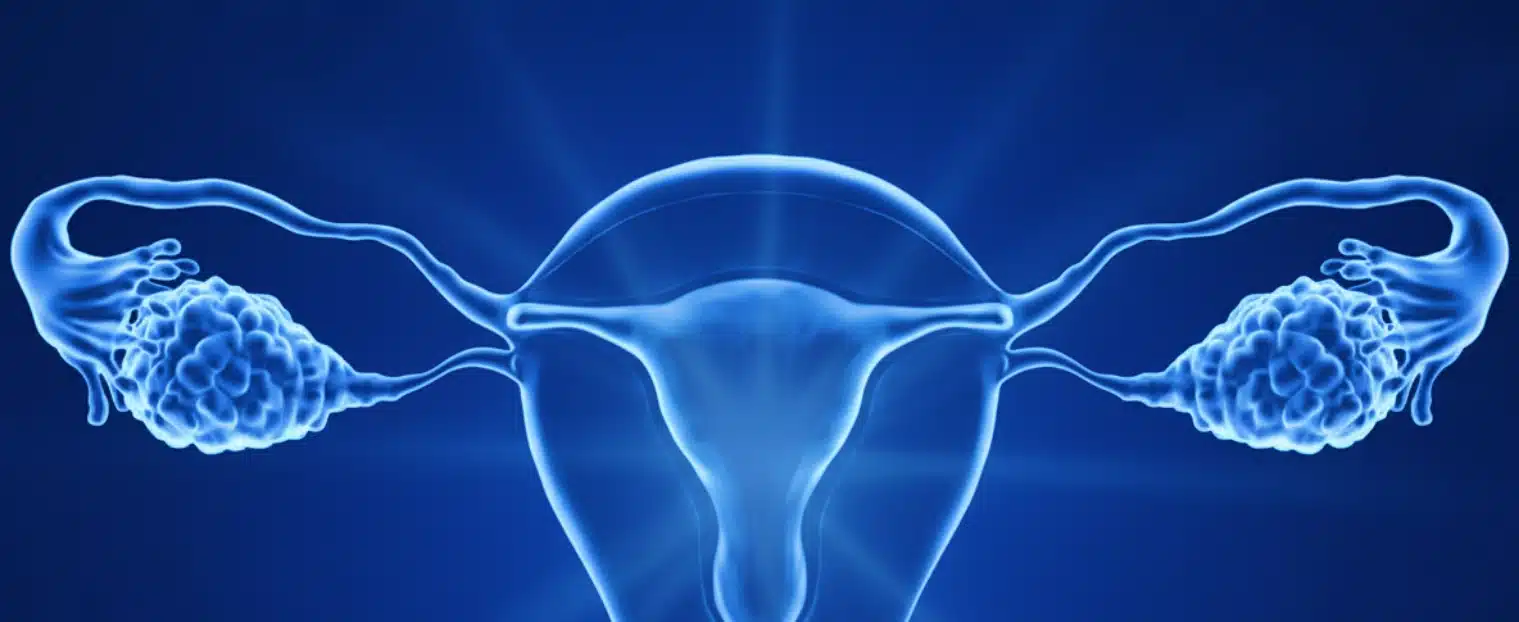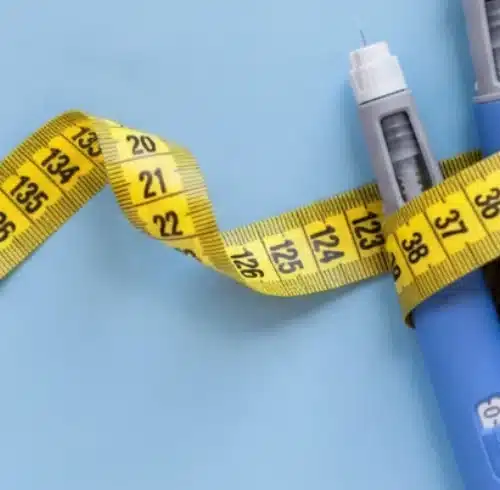Takeaways
- Bioengineered ovary scaffolds may one day restore hormone function more naturally than conventional HRT.
- These implants aim to mimic feedback loops and hormone cycles rather than deliver static doses.
- Clinical use remains pre-FDA, but preclinical studies show promising results in hormone secretion and tissue integration.
Why This Matters: Hormone Balance Beyond Pills and Patches
Menopause, surgical ovarian removal, or premature ovarian insufficiency often disrupt the delicate endocrine harmony women rely on. Hormone replacement therapy (HRT) remains the most prescribed intervention, yet it delivers hormones through systemic means that rarely mirror natural ovarian rhythms. Researchers continue to search for alternatives that offer physiologic hormone regulation without the risks or limitations of synthetic delivery systems.
Emerging work on bioengineered ovaries holds potential to replace systemic HRT with something more dynamic. These biologically active constructs aim to restore native hormone output from within the body itself. Patients affected by early menopause, cancer treatments, or hereditary risks may one day benefit from a solution that resembles their body’s original function more closely.
Women deserve options that support not just symptom relief but true physiological balance. As these technologies develop, their implications go far beyond estrogen pills or patches.
What Is a Bioengineered “Artificial Ovary”?
Scientists define a bioengineered ovary as a three-dimensional structure, often scaffold-based, designed to replicate key aspects of natural ovarian function. The goal shifts from fertility preservation to long-term hormone secretion that mimics endogenous rhythms. These devices are either implantable or injectable and include living ovarian cells supported by a biocompatible matrix.
A physiologic replacement must go beyond delivering static doses of hormones. It must support cyclic release, cellular feedback, and interaction with the broader endocrine system. Most current constructs incorporate ovarian follicles or granulosa cells, supported by biomaterials like fibrin or ECM hydrogels.
While early prototypes focused primarily on preserving fertility in cancer patients, newer designs target endocrine restoration as a standalone goal. This evolution broadens the potential impact far beyond reproductive age.
Breakthroughs from the Lab: What the Research Shows So Far
Recent work published by RSC researchers in 2025 introduced an injectable extracellular matrix (ECM) hydrogel derived from decellularized bovine ovarian tissue. After subcutaneous injection in mice, the material supported follicle maturation and secreted estradiol at levels sufficient to influence surrounding tissue. Notably, the hydrogel achieved follicle development and ovulation, but not oocyte fertilization.
Separate work involving in situ ovary (ISO) techniques shows follicles injected directly into the ovarian capsule can engraft and resume hormone secretion. In some mouse models, this approach even resulted in live births, though the goal in current applications centers on endocrine function.
Another major milestone came with the completion of the first human ovary cell atlas. Using spatial transcriptomics and single-cell sequencing, scientists mapped gene expression patterns in over 20,000 ovarian cells from multiple donors. This blueprint identifies critical zones and cell types needed to replicate hormone-secreting function.
These advances suggest the building blocks for a functional, hormone-producing ovary now exist. The question is how to integrate them into a reliable, implantable therapy.
Endocrine Restoration vs. Fertility: Two Different Frontiers
Much of the press surrounding artificial ovaries has focused on fertility preservation for cancer survivors. While that goal remains important, it differs from the challenge of replicating hormone balance in menopausal or surgically menopausal women.
Endocrine-focused bioengineered ovaries must provide stable, long-term secretion of estradiol, progesterone, and possibly AMH or inhibin. Fertility-centered models focus on oocyte maturation and ovulation, not daily hormonal regulation. The timelines, success metrics, and tissue designs vary widely between these aims.
In practical terms, a woman in her 30s seeking to conceive after cancer treatment may benefit from follicle-rich scaffolds. In contrast, a woman in her 50s experiencing hot flashes, brain fog, and bone density loss may need a scaffold engineered for hormone pulsatility, not reproduction.
Recognizing these distinct therapeutic goals is essential for both clinical trials and patient education.
Challenges Blocking Clinical Use
Despite exciting progress, major hurdles still prevent clinical translation. First, hormone production must synchronize with the hypothalamic-pituitary-ovarian axis. This dynamic feedback loop regulates FSH, LH, and estradiol levels on a near-daily basis. No current scaffold achieves this kind of tight regulatory harmony.
Second, biocompatibility remains a concern. Although ECM hydrogels show promise, they often derive from xenogeneic sources like bovine ovaries. Long-term immune tolerance, degradation rates, and fibrotic responses require more study. Scaffold materials must allow vascularization and resist immune rejection without immunosuppressive drugs.
Cancer safety adds another layer of complexity. In cancer survivors, particularly those with ovarian or hormone-sensitive tumors, reintroducing any tissue capable of hormone production requires absolute certainty that no malignant cells remain.
Hormonal imbalance affects both men and women, but for female patients facing menopause or oophorectomy, precision becomes even more essential. Hormonal imbalance often requires treatment strategies that account for multiple hormone pathways.
Finally, scalability, cost, and regulatory approval will influence availability. Reproducibility, sterilization, and long-term implantation data must meet FDA standards for Class III medical devices or biologics.
The Human Ovary Blueprint: A Cell-by-Cell Map for Scaffold Design
The new human ovary atlas represents a pivotal moment in scaffold bioengineering. By identifying the spatial organization of granulosa, theca, stromal, and immune cells within the ovarian cortex and medulla, researchers can now design constructs that replicate natural architecture.
Spatial transcriptomics revealed region-specific gene expression patterns tied to hormone synthesis, ECM remodeling, and vascular development. These gradients guide decisions about pore size, growth factor placement, and scaffold geometry.
Understanding where estrogen-producing cells reside, and how they interact with vasculature, improves our ability to engineer functional endocrine units. In this way, the atlas acts as a design blueprint, not just a descriptive map.
Even more promising, data from women across reproductive and menopausal ages show how aging affects ovarian tissue structure—critical information for patients beyond childbearing years.
Regulatory and Safety Roadblocks on the Path to Human Use
Every engineered implant intended for hormone delivery must pass through layers of regulatory scrutiny. Authorities evaluate not just biocompatibility, but also stability, hormone release profiles, and infection risk. A scaffold must demonstrate consistency over months or even years.
Sterility poses a major challenge. Materials derived from biological tissues risk bacterial or viral contamination during processing. Manufacturing protocols must eliminate pathogens while preserving structure and bioactivity. Quality control will depend on GMP (Good Manufacturing Practice) certification and batch-to-batch reproducibility.
Ethical concerns also shape approval. Trials must weigh potential benefits against long-term unknowns. Patients must understand that unlike oral HRT, implant removal may not be simple or risk-free.
In high-risk populations such as BRCA carriers or breast cancer survivors, any hormone restoration therapy must undergo exceptional scrutiny. Regulators will demand preclinical evidence that these implants do not accelerate tumor recurrence or metastasis.
Beyond Estrogen: The Promise of Multi-Hormone Restoration
The native ovary secretes a complex mix of hormones that shift throughout the cycle. A functional replacement must mirror these dynamics. Estrogen alone does not account for the full benefit of ovarian hormone support.
Granulosa cells also produce inhibin and AMH, which influence FSH levels and follicle recruitment. Theca cells secrete androgens, which convert into estrogens. An ideal scaffold must support this interplay, allowing for feedback and pulsatile output.
Some research teams now explore embedding biosensors and microfluidic channels into scaffolds. These additions could monitor hormone output in real-time and adjust release accordingly.
The goal is not just hormone replacement, but hormone restoration—recapturing the ovarian symphony rather than playing a single note.
Balanced estrogen levels also influence skin elasticity and glow, a reason some patients report radiant improvements during optimized hormone support.
Comparing Hormone Delivery Options for Women
Understanding how various hormone therapies differ in function, precision, and physiological impact helps patients make more informed decisions. The table below compares conventional and emerging hormone delivery approaches, including how they regulate—or fail to regulate—natural hormonal feedback.
| Delivery Method | Hormone Regulation | Feedback Loop Integration | Estrogen + Progesterone Support | Clinical Availability (2025) |
|---|---|---|---|---|
| Oral or Transdermal HRT | Systemic dosing, often non-cyclic | No dynamic feedback; fixed dosing | Yes (often synthetic or conjugated) | Widely available |
| Pellet Implants | Slow, steady release over months | No feedback control | Yes (custom-compounded) | Available in specialty clinics |
| Bioidentical Creams | Topical absorption varies; user-dependent | No cycle matching or adaptive response | Yes (if dosed together) | Moderately available; uneven oversight |
| Bioengineered Ovary Scaffold | Supports physiologic, cell-mediated hormone secretion | Designed for feedback loop restoration | Yes (via follicular cell support) | Preclinical (not yet FDA-approved) |
3 Practical Tips: Staying Informed and Prepared
- Track clinical trial registries if you’re interested in participating in early-stage studies. ClinicalTrials.gov often lists active trials for ovarian tissue transplants or scaffold implants.
- Ask your physician whether your symptoms or medical history suggest you may benefit from physiologic hormone therapy in the future. While most patients still use conventional HRT, awareness of emerging alternatives will help you make informed choices.
- Never assume that “natural” or “bioidentical” products are safer. Unregulated supplements can carry inconsistent doses or contamination risks. Stick to evidence-backed options and consult a licensed provider.
How This Could Reshape Women’s Health in the Next Decade
If proven safe and effective, bioengineered ovaries could offer new hope for women who cannot tolerate or do not respond to systemic HRT. That includes patients with clotting risks, liver conditions, or poor absorption of oral medications.
Patients undergoing oophorectomy for cancer prevention could receive a physiologic implant that restores hormone balance without reintroducing ovarian cancer risk. The same applies to women who face early menopause after chemotherapy or autoimmune disease.
A future where hormone balance comes from tissue-level restoration rather than external dosing could redefine menopausal care. Patients may no longer need to adjust patches or worry about dosage timing.
For patients undergoing oophorectomy or early menopause, regenerative implants may offer restorative treatments grounded in physiologic hormone renewal.
At Fountain of Youth SWFL, our staff tracks every major breakthrough in this space. Our commitment to patient-centered care includes understanding where science leads next—not just what worked yesterday.
FAQ: What Patients Are Asking
What is the difference between a hormonal implant and an artificial ovary?
A hormonal implant typically delivers a fixed amount of estrogen or progestin, without feedback or cycle variation. An artificial ovary, by contrast, contains living cells and is designed to release hormones in a more natural, regulated way over time.
Are there human trials underway for artificial ovary scaffolds?
As of 2025, most work remains in preclinical stages with animal models. Researchers have begun building protocols for human safety trials, but these implants are not yet available for general patient use.
Could this approach reduce the cancer risks tied to traditional HRT?
Possibly—some models aim to deliver lower hormone doses directly where needed, minimizing systemic exposure. For cancer survivors, however, safety must be proven first. Long-term trials will need to address tumor recurrence risks.
How long would an artificial ovary implant last in the body?
Duration remains under investigation. Early implants have functioned for several weeks in animal models, but human devices must last years. Researchers continue to explore scaffold durability and immune tolerance.
What Still Needs to Be Proven
Many hurdles remain before artificial ovaries reach clinical use. Researchers must prove that implants can maintain stable hormone output for years without degradation or immune rejection. Integration with the hypothalamic-pituitary feedback loop also needs verification.
Live tracking of hormone release and real-time responsiveness remain aspirational but critical. Without this, the scaffold cannot truly mimic natural cycling.
Fertility restoration remains an optional goal in this context. Most current designs focus on hormone balance, not egg production. Still, some patients may hope for both outcomes.
When trials move forward, they must include diverse patient groups and long follow-ups. Equity of access and safety across populations must be part of the innovation’s future.
Questions about how this technology could support your hormone journey? We’re ready to help. Give us a call at 239-355-3294.
Medical review: Reviewed by Dr. Keith Lafferty MD, Medical Director at Fountain of Youth SWFL on November 1, 2025. Fact-checked against government and academic sources; see in-text citations. This page follows our Medical Review & Sourcing Policy and undergoes updates at least every six months. Last updated November 1, 2025.





